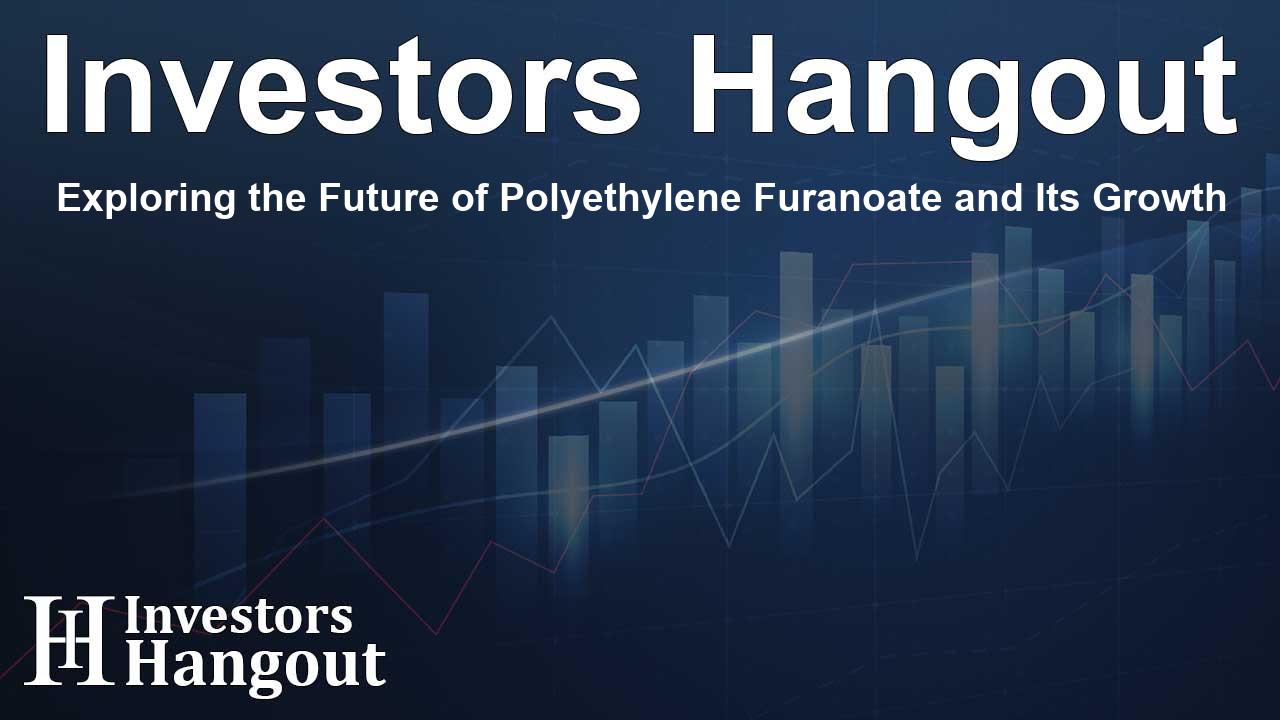Exploring the Future of Polyethylene Furanoate and Its Growth

Growth Trends in the Polyethylene Furanoate Market
As we delve into the dynamics of the Polyethylene Furanoate (PEF) market, it is evident that the sector is anticipated to witness significant growth, expected to reach an impressive USD 406.6 million by 2030. This marks a substantial increase from USD 30.5 million in 2025, showcasing a remarkable compound annual growth rate (CAGR) of 67.9%. Various factors are propelling this growth, including a rising shift towards sustainable and recyclable packaging solutions.
Driving Forces Behind PEF Adoption
Sustainability and Regulatory Support
One of the major catalysts for the ascending demand for polyethylene furanoate is the ever-growing emphasis on sustainability. Consumers and businesses alike are increasingly adopting eco-friendly materials due to heightened environmental consciousness. Regulatory incentives favoring bio-based plastics also play a critical role, steering the industry toward greener alternatives.
Technological Advancements and Production Efficiencies
Innovations in PEF production methodologies, including state-of-the-art catalytic processes and more efficient polymerization techniques, are enhancing production capabilities. By leveraging biobased feedstock, manufacturers are achieving greater economic viability and scalability. These advancements also lead to improved properties of PEF, such as enhanced permeability, thermal stability, and superior recyclability compared to traditional PET.
Key Market Players and Their Contributions
The polyethylene furanoate landscape features notable contributors, including Avantium, Sulzer Ltd, and Origin Materials, among others. These companies are pioneering developments that are set to influence the market significantly.
Benefits of Polyethylene Furanoate
PEF distinguishes itself as a 100% bio-based polymer, derived from renewable plant sugars. Its characteristics boast superior performance compared to conventional PET, presenting better thermal resistance and a higher recyclability factor. Consequently, PEF serves as an invaluable resource for businesses striving to meet stringent environmental regulations regarding single-use plastics.
Market Challenges and Opportunities
Challenges in Adoption
Despite its advantages, the polyethylene furanoate market faces challenges, primarily due to the entrenched dominance of conventional plastics. Manufacturers must navigate the complexities of transitioning to PEF while addressing production costs that might be prohibitive at this stage.
Opportunities for Growth
On the brighter side, the diverse applications of PEF in food & beverage, textiles, and packaging present numerous opportunities. Companies can tap into new markets by investing in research and development to enhance FDCA production technologies and pursue collaborations with brand partners.
Market Outlook and Future Projections
The future of the polyethylene furanoate market is promising. Driven by increased awareness of environmental issues, PEF films are gaining traction due to their application potential in sustainable packaging. The projected growth in the beverage industry highlights the versatility of PEF as it positions itself as a go-to material for lightweight, high-performance applications.
Regional Analysis
In North America, the polyethylene furanoate market is gaining substantial ground. Investments in green chemistry and regulatory support are contributing to the market's robustness. This region is set to account for a significant share, reflective of the growing commitment from major retail brands toward sustainable practices.
Conclusion
The trajectory of the polyethylene furanoate market signifies a transformative shift in how industries approach sustainability. Stakeholders are encouraged to embrace these changes, invest in innovative processes, and adapt to the growing demands for sustainable packaging solutions. Through collaboration and strategic advancements, the full potential of PEF can be harnessed, paving the way for significant contributions to a greener planet.
Frequently Asked Questions
What factors are driving the growth of the polyethylene furanoate market?
The growth is primarily driven by increasing demand for sustainable packaging, regulatory support for bio-based plastics, and technological advancements in production.
How does polyethylene furanoate compare to traditional PET?
PEF is a 100% bio-based polymer with better thermal resistance, permeability, and recyclability than PET, making it a more sustainable option.
Who are the key players in the polyethylene furanoate market?
Key players include Avantium, Sulzer Ltd, and Origin Materials, among others, who are pivotal in advancing PEF technology and applications.
What are the challenges faced in the adoption of PEF?
The primary challenges include the dominance of conventional plastics and high production costs that manufacturers must overcome.
What is the future outlook for the polyethylene furanoate market?
The market is set for significant growth, driven by environmental awareness and demand for sustainable solutions across various industries.
About The Author
Contact Owen Jenkins privately here. Or send an email with ATTN: Owen Jenkins as the subject to contact@investorshangout.com.
About Investors Hangout
Investors Hangout is a leading online stock forum for financial discussion and learning, offering a wide range of free tools and resources. It draws in traders of all levels, who exchange market knowledge, investigate trading tactics, and keep an eye on industry developments in real time. Featuring financial articles, stock message boards, quotes, charts, company profiles, and live news updates. Through cooperative learning and a wealth of informational resources, it helps users from novices creating their first portfolios to experts honing their techniques. Join Investors Hangout today: https://investorshangout.com/
The content of this article is based on factual, publicly available information and does not represent legal, financial, or investment advice. Investors Hangout does not offer financial advice, and the author is not a licensed financial advisor. Consult a qualified advisor before making any financial or investment decisions based on this article. This article should not be considered advice to purchase, sell, or hold any securities or other investments. If any of the material provided here is inaccurate, please contact us for corrections.
